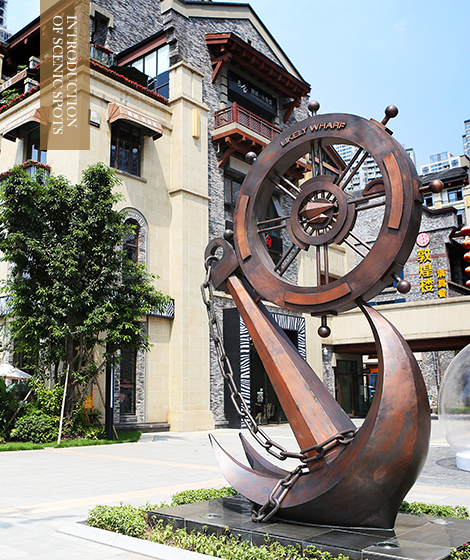
Liujiatai, Jiangbei (original site)
Chongqing has enjoyed convenient water transportation since ancient times as it’s located at confluence of two rivers. Chongqing wharf has been an important part of water transportation in Yangtze River Basin as it served as the stage of a prosperous scene where boats came and go and merchants gathered here for profits.
As a major wharf on the north bank of Jialing River during the Ming and Qing dynasties, Liujiatai was the port which must be passed when goods and materials from northern Sichuan were transported to the city proper of Chongqing. Goods and materials transported to and from Chongqing were all transferred among Liujiatai and the adjacent Daxigou Wharf and Linjiangmen Wharf in Yuzhong District.
Back then, most porters and boat trackers made a living at Liujiatai.
There used to be a slaughtering house (called “cattle killing farm” by the locals) at Liujiatai which was operational from Ming and Qing dynasties until the founding of the People’s Republic of China.
There used to be a slaughtering house (called “cattle killing farm” by the locals) at Liujiatai which was operational from Ming and Qing dynasties until the founding of the People’s Republic of China.
During the Ming and Qing dynasties, porters and boat trackers often took out of water those animal viscera which had been thrown by the slaughtering house into the river. After washing the animal viscera clean, they would pick up some pebbles on the river bank or sandbank and put firewood on the pebbles. Using an iron pot, they would then stew a large portion of spicy soup which was their own invention.
With implementation of the immigration policy of “Huguang Fill in Sichuan” by the Qing dynasty, a large number of non-locals came and settled in Chongqing. On the land north of the river, they “set up a sign as a demarcation.” Back then, the area was called “Yinghuadu.” The slope on the bank of Yinghuadu was then developed into a platform suitable for agricultural cultivation. Since then, the place is known as “Liujiatai.”
Nicknamed “mixed stew” by those porters and boat trackers, the soup is the crude form of today’s Chongqing hotpot. Over time, the “mixed stew” hotpot had become a typical scene on the bank of Jialing River.
By the end of Qing dynasty, some vendors at Liujiatai started their business at the wharf by selling simple style hotpot which was called “eight water pieces.”
By the end of Qing dynasty, some vendors at Liujiatai started their business at the wharf by selling simple style hotpot which was called “eight water pieces.”
“Eight water pieces” was then sold at all the major wharves of Chongqing. Selling hotpot has gradually become a trade in Chongqing. This is the origin of Chongqing hotpot!
